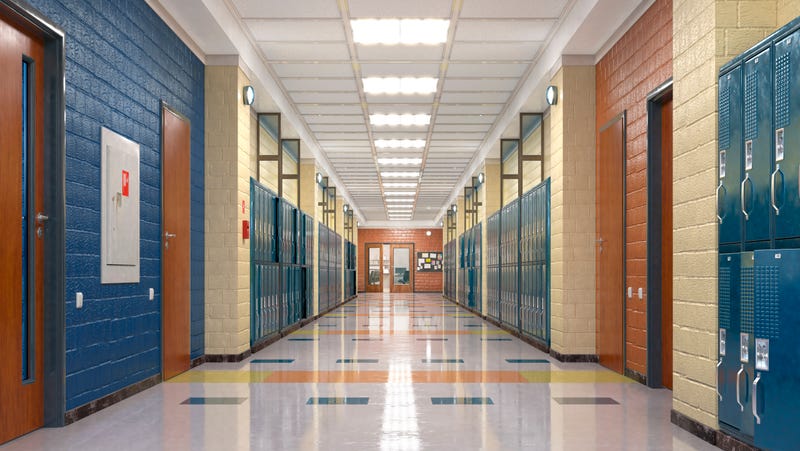
Buffalo, N.Y. (WBEN) - Another school year in Western New York is less than two weeks away, as students and staff alike are making final preparations to return to the classroom.

With classes returning to session, it will also signal the return of regular school safety drills, including the likes of fire drills, lockdowns, stay in place orders, and other drills in case of an emergency. And given the recent acts of violence in both the mass shootings in Buffalo and Uvalde, Texas, there may be an additional emphasis on schools conducting more drills to ensure the safety of its students and staff.
"There's so many different approaches that are being used in schools in order to promote safety," said Amanda Nickerson, Director of the Dr. Jean M. Alberti Center for the Prevention of Bullying, Abuse and School Violence at the University at Buffalo. "I think that the messaging and the procedures that schools should be using is, 'We care about you students, we care about your safety. We are here to help promote your safety, as well as helping you to learn and to learn skills. And we have many procedures in place that are designed to help further with this safety.'"
However, some schools have been forced to maybe take more of a hardening approach when it comes to school safety. This includes having metal detectors, enhanced security, guards and other measures of that kind that Nickerson believes is making students feel like they're more in a prison environment versus being in a safe environment physical and psychological like a school.
"The more target-hardening kind of approaches can actually have the opposite effect of making people feel more fearful and more anxious, whereas if we're really balancing what we're doing, then that's more likely to lead to perceptions of safety, as well," Nickerson said.
So how much does certain safety drills in school affect anxiety levels among students, especially if there could be an uptick in drills given the recent violence?
For Nickerson, her research has looked specifically at lockdown drills, because there is a notion that these drills can be more likely to increase anxiety in students.
"We've done a couple of empirical studies looking at this, and in our research, we have not found that implementing lockdown drills, according to best practices, leads to increased anxiety. In fact, in our most recent study where we looked at a state anxiety before doing a drill and then after doing a drill, we found that students were actually less anxious after doing the drill and expressed more kind of positive well-being, meaning they felt more content and things like that," Nickerson revealed.
"I will say that that is a lockdown drill that follows best practice recommendations, where it's being announced as a drill. Teachers are locking the door, the students are getting out of sight and staying quiet, and the lights are turned off. It's not using props, making people think that they're in an actual emergency, having gunshots or teaching them to fight back. It's not some of those other permutations that we sometimes hear that people are using, but rather following the traditional sort of standard approach for lockdown drill."
While it is certainly a concern for students to potentially feel anxiety when it comes to lockdown drills and other safety measures being taken in schools, what about teachers and other faculty of the school? Are they being affected just as much as students by school safety drills?
Nickerson says they have also looked at teachers in their research, and found that like students, with best practice recommendations, the safety drills were able to help increase teachers' preparedness for these types of situations without having the negative effects.
"We have not looked specifically at the construct of anxiety in teachers, but we have looked at perceptions of safety and found that we're not seeing after doing these drills that people are feeling less safe in schools," she said. "Again, this is looking at lockdowns very specifically, there are certainly news reports and anecdotal reports of drills that haven't been announced as drills or drills that have been done taking people off guard that has undoubtedly related to anxiety. But the best practice way for doing lockdown drills have not been shown to have these effects."
As the new school year gets set to commence, what other measures can schools take to not only ensure the safety of their students and staff, but also ensure everyone of their mental and psychological well-being while practicing these safety measures?
As Nickerson points out, a lot of districts are trying to emphasize the climate in schools, saying it's a welcoming and positive place where differences are welcomed and conflicts are resolved in constructive and socially kinds of ways.
In addition, Nickerson says the culture of "See Something, Say Something" has become a really powerful tool towards preventing some acts of violence from happening at schools.
"We find that actually most of the thwarted school shootings, it's hard to know when we've prevented something, because we don't know how many things we actually prevent it. But studies have thwarted school shootings have found that in about 75% of the time, it's because someone who has been concerned has stepped up, reported that concern so that people can follow the guidelines to investigate further and manage the situation," Nickerson said. "But that happens in a climate where people aren't fearful that if they say something, that they're going to be accused or punished. There has to be those trusting relationships, and the idea that everybody has this common goal of safety, as well."
While Nickerson understands it may be hard to have conversations about school safety off the heels of the tragedies in Buffalo and Uvalde, she feels it's important for families to know that overall, schools are safe places for students.
"Over the last couple of decades, I think that we have more fear and concern and anxiety about [more violence] happening. So I just urge that we kind of keep this in check and try to make sure that our messaging and our practices are about how to promote wellness, mental health and safe schools and communities and partnerships, as opposed to sort of going in too far of a reactive direction," Nickerson said. "We want to prepare, not scare - that's sort of been my mantra lately - and I do believe, and our research shows, that lockdown drills are part of that, even though sometimes people put those in the bucket of saying, 'Well, these are more scary things.' But if they're done correctly, where you're explaining - just like we explain to kids why they wear a helmet when they're riding a bike or why they buckle their seatbelts - that we are putting things into place for if there is a danger in the school, this is the best way we know to keep you safe."
More of our conversation with Nickerson is available in the player below:

